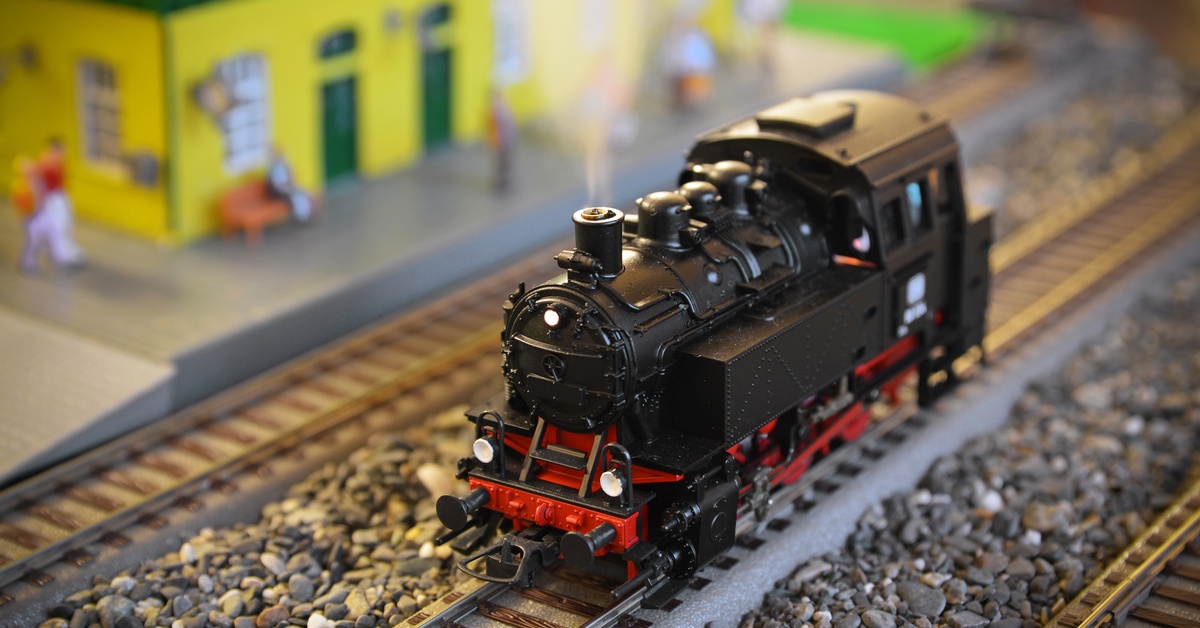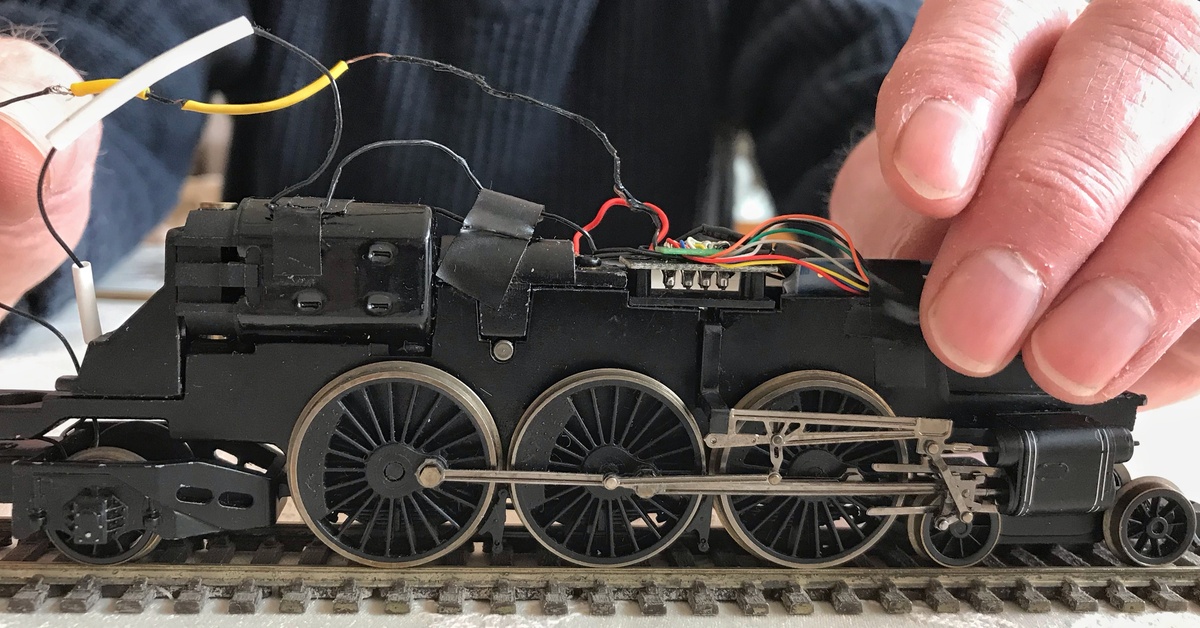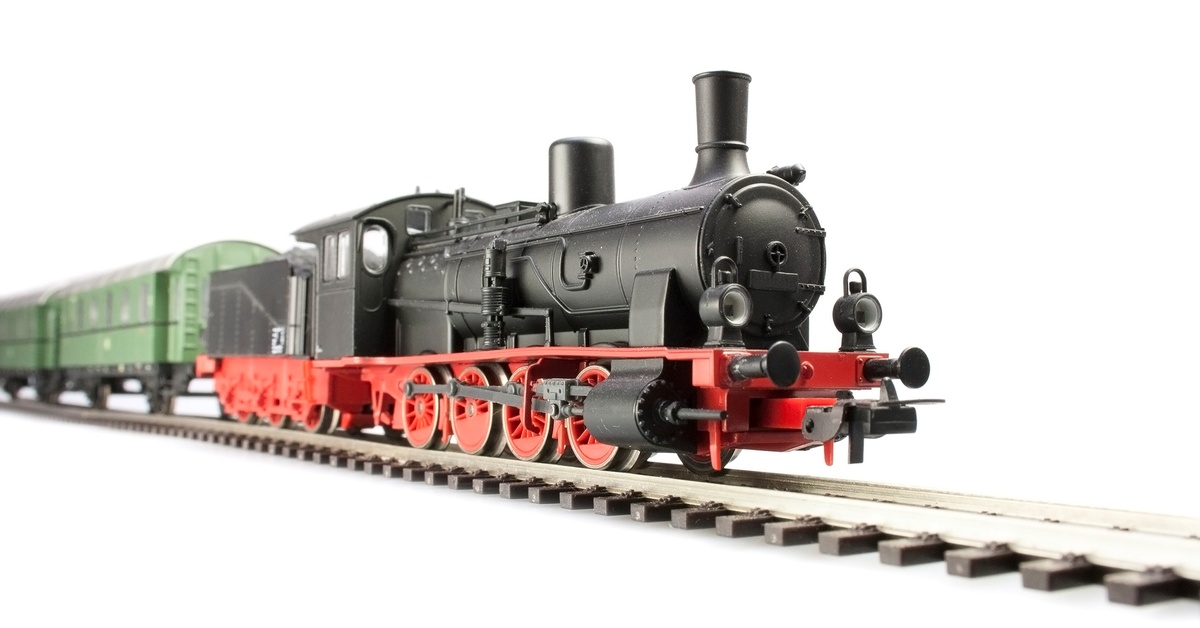The Anatomy of a Model Train: Everything You Should Know
by Theodore Hust • July 30, 2025
Model trains have fascinated hobbyists for over a century, evolving from simple toys to detailed replicas of real railway systems. Whether you're new to the hobby or looking to expand your knowledge, understanding the key components can help you make better choices for your collection. In this guide, we’ll explain everything you should know about the anatomy of a model train, from the motor and drive systems to the scenery and detailing.
The Locomotive
There’s no better place to start our comprehensive review of model train parts than the heart: the locomotive. Understanding its components helps you appreciate the engineering marvel packed into these miniature machines.
Chassis and Frame
The chassis forms the structural backbone of your locomotive, providing the foundation upon which all other components mount. The frame houses the motor, supports the drive system, and provides mounting points for the body shell.
Weight plays a crucial role in locomotive performance. Manufacturers often add metal weights to the chassis to improve traction and pulling power. This additional weight helps the locomotive maintain contact with the rails and prevents slipping when pulling heavy consists around curves or up steep grades.
Motor and Drive System
The motor converts electrical energy into mechanical energy, resulting in movement. Modern models use either DC or AC motors, depending on the control system. High-quality motors feature precision-wound armatures and permanent magnets that deliver consistent operation across a wide speed range.
The drive system transfers power from the motor to the wheels through gears and driveshafts. Worm gears connect the motor to the drive wheels for even power transmission and natural braking.
Wheels and Axles
Locomotive wheels must maintain electrical contact with the rails while supporting the model's weight and transmitting driving force. The axles provide the structural connection between wheel pairs and allow for smooth rotation in their bearings.
Traction tires on some driving wheels help improve grip on the rails, especially important for locomotives pulling long trains. These rubber rings fit into grooves in the wheel treads, providing additional friction without affecting electrical conductivity.
Body Shell
The body shell gives your locomotive its distinctive appearance and protects the internal mechanisms. High-quality shells feature crisp details, accurate proportions, and authentic paint schemes.
Modern body shells can include details such as handrails, horns, and lights. These components enhance realism and allow for more accurate representations of prototype features.
Making Connections: Couplers
Couplers connect your locomotive to the cars it pulls. Knuckle couplers, which operate similarly to their full-size counterparts, provide the most realistic appearance and function. These couplers automatically link when you push the cars together and uncouple with magnetic ramps or manual tools.

The Supporting Cast: Rolling Stock
Rolling stock encompasses all the cars that your locomotive pulls, from freight cars carrying various loads to passenger cars transporting travelers to their destinations. This is where you can distinguish your model train as a passenger locomotive or a freight train.
Freight Cars: Workhorses of the Rails
Freight cars come in numerous types, each for specific cargo. Box cars handle general merchandise, tank cars transport liquids, hopper cars carry bulk materials like coal or grain, and flatcars move large or irregularly shaped items.
A freight car’s anatomy includes the underframe, which provides structural support and houses the brake system, trucks that support the car and allow it to navigate curves, and the car body design of its specific cargo type. High-quality freight cars feature accurate proportions, proper weight, and detailed underframes that include brake wheels, air hoses, and other prototype features.
Passenger Cars: Comfort and Style
Passenger cars transport people and typically feature more elaborate construction and detailing than freight cars. Coach cars provide basic seating, dining cars offer meal service, observation cars allow passengers to enjoy scenic views, and sleeper cars include overnight accommodations.
Passenger cars include the underframe and trucks like freight cars, but these cars feature windows, interiors, and even lighting systems. The roof construction typically includes ventilators, air conditioning equipment, and other realistic features.
The Foundation: Track Systems
Your model train won’t go anywhere without a properly functioning track. Understanding track construction helps you choose the right products and maintain optimal performance.
Track Varieties and Construction
Model railroad tracks come in several basic types, each offering different advantages. Sectional tracks consist of pre-formed pieces that snap or clip together, making them ideal for beginners or temporary layouts. There are also flexible tracks for maximum layout flexibility with custom curves and cut lengths.
Each track section includes rails, ties, and joining mechanisms. The rails carry both the train's weight and electrical power, while the ties provide spacing and support.
Ballast and Roadbed
Ballast represents the crushed stone bed that supports real railroad track, and adding ballast to your model improves its realism. Model ballast typically consists of crushed stone, sand, or synthetic materials sized appropriately for your scale.
Roadbed provides a raised foundation for your track, improving appearance and sound dampening. Cork roadbed features a natural appearance and sound-absorbing properties, while foam roadbed is lighter and easier to install.
Power and Control: Electrical Components
The electrical system brings your model railroad to life. Transformers and proper wiring provide power to locomotives and accessories while giving you control over train operations.
Transformers and Power Packs
Transformers convert household AC power to the lower voltage model trains require. Basic power packs provide simple speed and direction control, while advanced units offer features like momentum control, brake effects, and multiple throttles for independent train control. Modern digital command control systems allow independent control of multiple locomotives on the same track, along with sound effects and lighting control.
Wiring and Connections
Proper wiring ensures reliable power delivery throughout your layout. Bus wires run beneath the layout and connect to track feeders at regular intervals, maintaining consistent power even on large layouts. Soldered connections provide the most reliable joints, while various connectors allow for removable sections and easy maintenance.

Bringing It All Together: Scenery and Detailing
If you want your model train to look like the real thing, you’ll need realistic details. Scenery transforms your model railroad from a simple train set into a convincing miniature world that tells a story and captures the imagination.
Creating Realistic Landscapes and Adding Life
Effective scenery starts with a solid foundation, such as foam, plaster, or lightweight materials, that you can shape or curve. Ground cover materials range from static grass and leaf litter to commercially available scenic materials specifically for model railroads. Applying these materials in thin layers and varying the colors creates a natural-looking terrain that enhances the overall scene.
Populate your scene with figures of people and animals to add life, and vehicles, buildings, and infrastructure to create a believable environment. Light weathering can dramatically improve the appearance, while advanced techniques create heavily weathered equipment that tells a story of hard use and age.
Your Journey Into Model Railroading Begins Here
Now that you understand everything you should know about the anatomy of model trains, you can start your own! At Only Trains, we offer advice and everything you need to create a model train from top brands. Whether you need LGB curved track or a new locomotive, we’re your one-stop shop for model train supplies and products. Contact our team to find the perfect components for your needs and budget.

